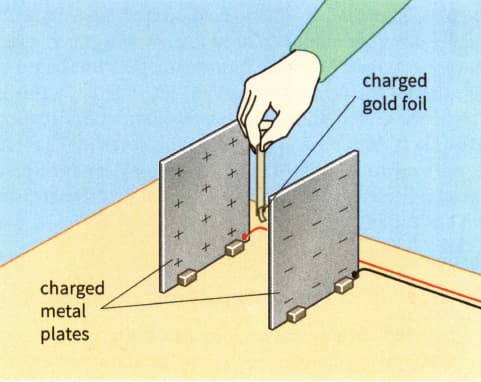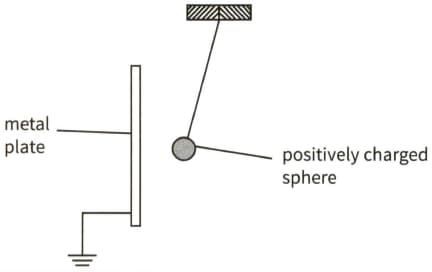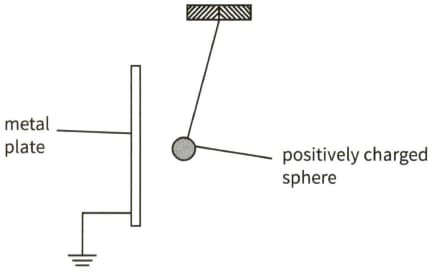Figure shows apparatus used to investigate the field between a pair of charged, parallel plates.

Investigating the electric field between two charged metal plates.
State and explain what would be observed if the gold foil momentarily touched the negatively charged plate.


Important Questions on Uniform Electric Fields
A charged dust particle in an electric field experiences a force of $4.4 \times 10^{-13} \mathrm{~N}$. The charge on the particle is $8.8 \times 10^{-17} \mathrm{C}$. Calculate the electric field strength.
A potential difference of $2.4 \mathrm{kV}$ is applied across a pair of parallel plates. The electric field strength between the plates is $3.0 \times 10^{4} \mathrm{~V} \mathrm{~m}^{-1}$. Calculate the separation of the plates.
A potential difference of $2.4 \mathrm{kV}$ is applied across a pair of parallel plates. The electric field strength between the plates is $3.0 \times 10^{4} \mathrm{~V} \mathrm{~m}^{-1}$.
The plates are now moved so that they are $2.0 \mathrm{~cm}$ apart. Calculate the electric field strength produced in this new position.
The diagram shows a positively charged sphere hanging by an insulating thread close to an earthed metal plate.

Copy the diagram and draw five lines to show the electric field near the plate and the sphere.
This diagram shows a positively charged sphere hanging by an insulating thread close to an earthed metal plate.

Explain why the sphere is attracted towards the metal plate.
This diagram shows a positively charged sphere hanging by an insulating thread close to an earthed metal plate.

The sphere is now replaced with a similar negatively charged sphere.
Explain what would be observed when the sphere is brought near to the earthed metal plate.
